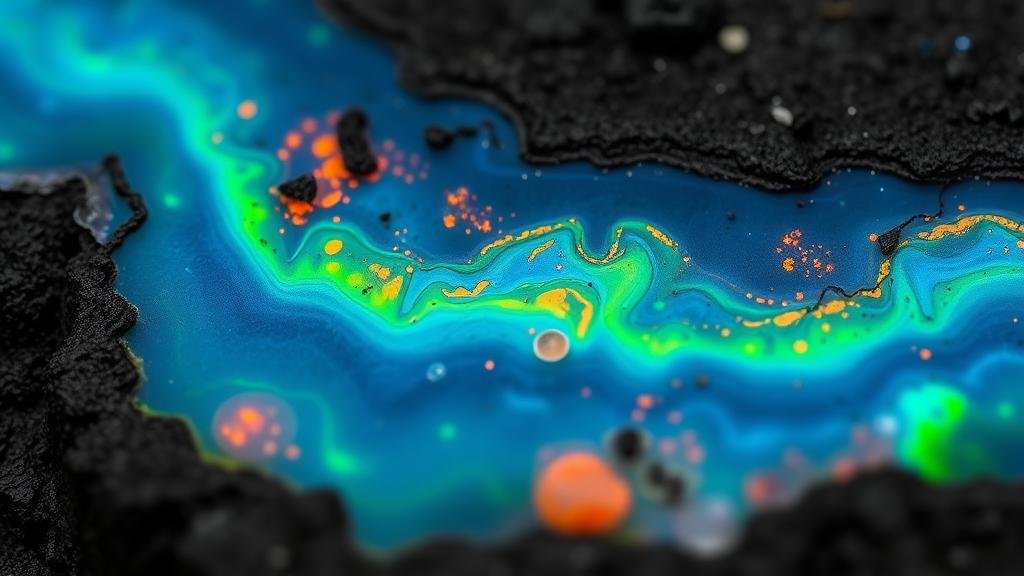Volcanic Treasures: Unearthing Fire Opals and Obsidian in Lava Flows
Volcanic Treasures: Unearthing Fire Opals and Obsidian in Lava Flows
For rockhounds and mineral collectors, volcanic landscapes present a treasure trove of unique geological specimens, particularly fire opals and obsidian. These materials, formed from ancient lava flows, offer insights into the Earths fiery processes and provide aesthetic appeal for both casual collectors and serious enthusiasts. This article delves into the formation, properties, and collecting strategies for these volcanic treasures.
The Formation of Fire Opals
Fire opals, primarily found in Mexico, are characterized by their warm colors ranging from yellow to orange and red. Unlike their more famous counterparts, white opals, fire opals often exhibit a translucence rather than a full opalescence. This striking appearance is a result of their formation through volcanic activity.
In particular, fire opals form in rhyolitic lava flows that cool and solidify. The silica-rich lava allows for the creation of opal by providing a silica gel solution that gradually crystallizes. Researchers estimate that about 90% of the worlds fire opal deposits are located in the Mexican states of Queretaro and Hidalgo.
Properties and Characteristics of Fire Opals
Fire opals possess unique physical and optical properties:
- Color: The gemstone exhibits a range of hues, with those displaying more intense colors typically being more valuable.
- Transparency: Fire opals can be transparent, translucent, or opaque; the former two are most sought after.
- Hardness: On the Mohs scale, fire opals rate between 5.5 and 6.5, making them relatively durable but still susceptible to scratching.
The Formation of Obsidian
Obsidian is a natural glass formed by the rapid cooling of silica-rich lava, leading to an igneous rock devoid of crystal structure. Its formation typically occurs during explosive volcanic eruptions, where the lava cools so swiftly that minerals do not have time to crystallize.
Commonly found in areas with significant volcanic activity such as the Pacific Northwest of the United States, Iceland, and parts of Mexico, obsidian is recognized for its sharp edges and glossy appearance. The unique iron and magnesium content can influence its color, resulting in variations such as black, mahogany, or even a rainbow effect when viewed under certain angles.
Properties and Characteristics of Obsidian
- Color: Obsidian is often black but can also appear in hues such as green, brown, or gray due to included minerals.
- Texture: This volcanic glass features a smooth, glassy texture, often with unique flow patterns, making each piece distinct.
- Hardness: Obsidian rates around 5.5 on the Mohs scale; while it can be sharp, it is brittle and prone to fracture.
Collecting Tips for Fire Opals and Obsidian
Engaging with volcanic treasures requires knowledge and careful planning. Here are several tips for collectors:
- Research Locations: Familiarize yourself with volcanic areas known for quality specimens–regions in Mexico are known for fire opals, while places like Mount St. Helens are rich in obsidian.
- Field Collecting: When field collecting, ensure you have the appropriate permits and respect land ownership. Always practice sustainable collecting by leaving nature as you found it.
- Use Proper Tools: Essential tools for collecting include hand tools for digging, protective gloves, and a field guide to help identify different types of rocks and minerals.
- Identify Quality Samples: Look for specimens that showcase vibrant colors or unique patterns, especially in opals. For obsidian, seek out pieces with smooth surfaces free of bubbles or cloudiness.
Real-World Applications of Fire Opals and Obsidian
Beyond their beauty, fire opals and obsidian have practical applications:
- Jewelry: Fire opals are highly valued in the jewelry market, with certain specimens fetching significant prices at auctions.
- Tools: Obsidian has been used since prehistoric times for making sharp tools and weapons due to its glassy fracture and ability to be shaped.
- Decorative Pieces: Both materials are popular for decorative items, home décor, and collector displays.
Conclusion
Fire opals and obsidian serve as magnificent examples of geological artistry forged in the furnace of the Earth. For rockhounds and mineral collectors alike, they provide both a rewarding hobby and the opportunity to appreciate the dynamic processes that shape our planet. By understanding their formation, properties, and practical collection tips, enthusiasts can effectively unearth these volcanic treasures and enrich their mineral collections.
As you embark on your collecting journey, remember that patience and persistence are key. Happy hunting!



